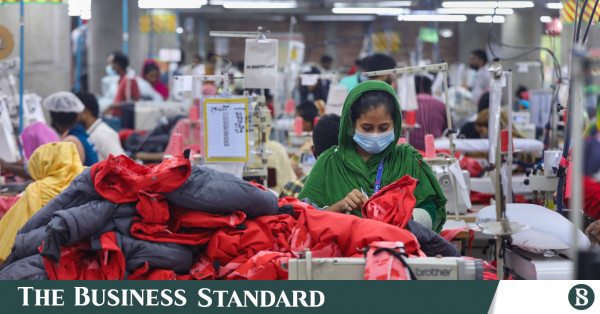India’s cotton exports to Bangladesh hit as Dhaka’s Western garment orders dry up


Even as garment production ramps up again in Bangladesh, Western garments and footwear companies have placed a temporary pause on new orders, says The Indian Express.
The decline in orders from Bangladesh has had a spillover effect on the Indian textile industry, which supplies raw materials and other input items to Bangladesh. While fresh inquiries for garments are coming to India, Indian cotton exports to Bangladesh have begun to decline, industry executives said.
“New orders are not coming in from Western companies. The workers and the administration understand that production is the lifeline, and they are working overtime to complete orders. Some items are being sourced from India to fulfil the orders, and even more technicians are coming from India,” M Rafeeque Ahmed, Chairman of Chennai-based Farida Group, said. The Group has investments in Bangladesh’s footwear sector.
Ahmed stated that much of the production is taking place in Dhaka and Chittagong, which are relatively isolated from the protests. There were disruptions earlier in August, but normalcy is returning, he said, adding that Western orders will eventually resume due to the favourable duty climate owing to Bangladesh’s status as a least developed country (LDC).
“Western companies are looking at India as an alternative, but much depends on the capacity to deliver, which at the moment has qualitative and quantitative mismatches between Indian and Bangladeshi product offerings,” said Chandrima Chatterjee, Secretary General of the Confederation of Indian Textile Industry (CITI).
Chatterjee mentioned that garment inquiries are coming in, but the immediate impact on the Indian textile industry has been negative since our exports of input materials to Bangladesh have slowed down. However, our PLI scheme and PM Mitra scheme are steps in the right direction to cater to national demand, she added.
A garment sector executive who did not wish to be named said that Western companies were already looking at India even before the ongoing crisis in Bangladesh. The European market is increasingly concerned about human rights issues in Bangladesh and is therefore looking at the Indian market.
“The saturation in Bangladesh began some time ago, but orders had not been moving to India. Most of them are going to Cambodia, Vietnam, and Indonesia. India has a lot of opportunities, but our product mix is not changing, and the benefits are not arriving,” the executive said on condition of anonymity.
The Bangladeshi textile and garment industry, which accounts for over 80 per cent of Bangladesh’s total export earnings and contributes approximately 11 per cent to the nation’s GDP.
Bangladesh’s $45 billion clothing industry, which employs over four million workers, was already affected due to the weakening electricity generation infrastructure, hit by higher input costs following the start of the Russia-Ukraine war and adverse weather events, according to S&P Global. The situation in Bangladesh continues to be a concern, as Prime Minister Narendra Modi and US President Joe Biden discussed the situation in Bangladesh on Monday.
Earlier this month, Indian Finance Minister Nirmala Sitharaman had also said that the Indian garment and knitted fabric sector is experiencing “a bit of uncertainty” amid the ongoing political developments in the neighbouring country of Bangladesh.
She expressed hope that the interim government there would settle things “sooner rather than later”, adding that efforts are being made to ensure that borders with the neighbouring country are safe.




